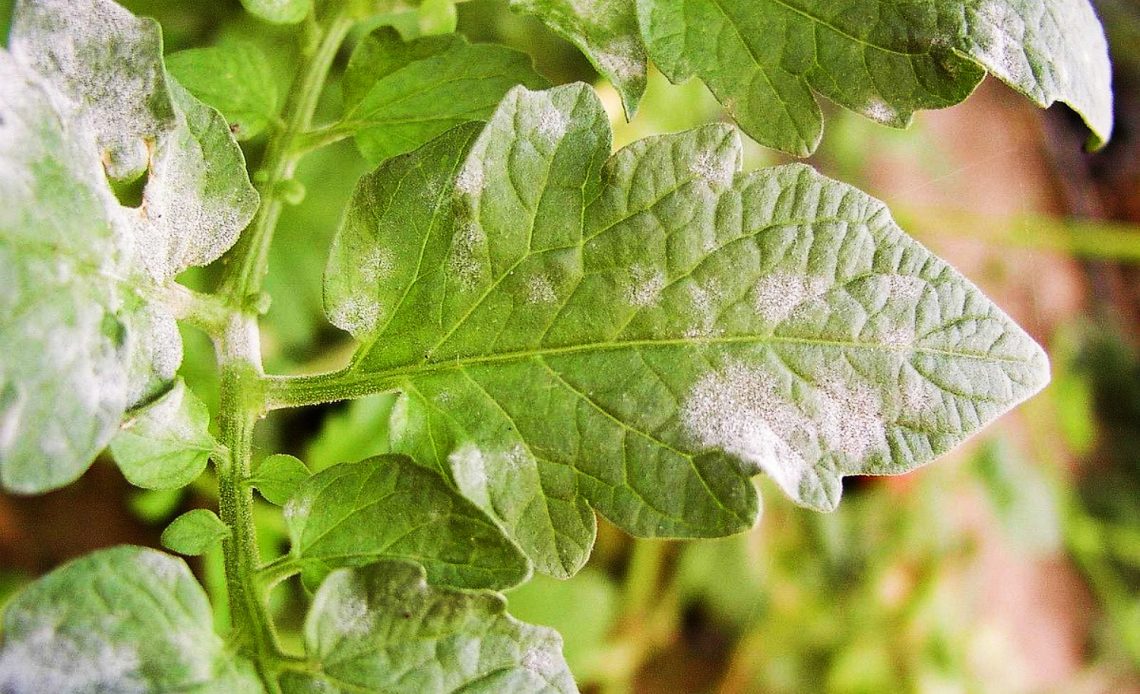

We’re here to help! Wild Yards is a completely free website that is 100% dedicated to helping you create a wildlife-friendly, sustainable yard. Read more
WildYards is reader-supported. When you buy a product through a link on our site, we may earn a comission. Every product is independently selected by our (obsessive) editors and our reviews are unbiased and objective. Read more about our mission or our privacy policy.
Growing tomatoes can be fun, but it’s not all sunshine and daisies. It takes weeks of planning, preparing garden beds, and starting seedlings, to go from tiny tomato seed to juicy tomato fruit.
When you spend precious hours tending to your garden, the last thing you want is to see your beloved tomatoes fall prey to diseases.
Even though tomatoes are a fairly hardy crop, they can still be susceptible to bacteria, fungi, and viruses.
If you recently noticed white spots on tomato leaves, you’re probably panicking.
Why are your tomato leaves getting these mysterious spots, and are they treatable?
White spots on tomato leaves are often caused by sun scald, pest damage, nutritional deficiencies, and powdery mildew. Unfortunately, in some cases, the white spots are caused by diseases, some of which cannot be treated.
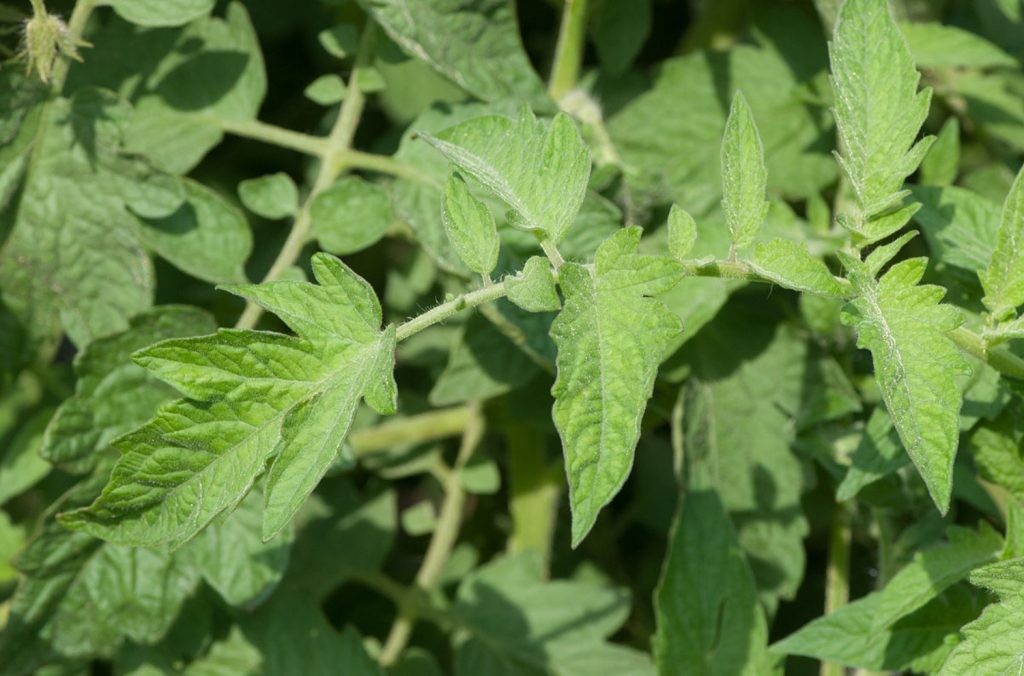
5 Reasons why you’re seeing white spots on tomato leaves, plus solutions that really work
Often, white spots on tomato leaves aren’t a cause for concern. But these spots can also be indicative of a serious problem.
The sooner you figure out what’s going on, the better off your garden will be.
Here are 5 reasons why you’re seeing white spots on your tomato plants, and what you can do to help them out.
The problem: Sunscald
Even though tomatoes prefer to be grown in full sun, they can still receive too much sunlight, especially in warm climates.
If your tomatoes are growing in intense direct sunlight, they may lose some of their pigment due to sun damage.
It’s not uncommon for young tomato plants to develop white spots on their leaves shortly after being moved outside.
Those little white spots you’re seeing could be your tomato plant’s way of telling you that it’s getting much too hot.
If the plants have already begun producing, their tomatoes may also turn white, and develop wrinkled, blistered skins.
The solution: Give the plants some shade
Move potted plants onto your porch or patio to protect them during the hottest part of the afternoon.
Use a solar screen or even umbrellas to protect plants that are growing in the ground.
Plan ahead for next year by arranging your garden layout to keep your tomato plants on the shady side of a taller crop, like corn or zucchini growing up a trellis.
This will help provide your plants with some extra protection from the elements so they don’t develop white spots on tomato leaves.
Hardening off your seedlings by keeping them outdoors as often as possible can help prevent young plants from turning white after transplanting them to your garden.
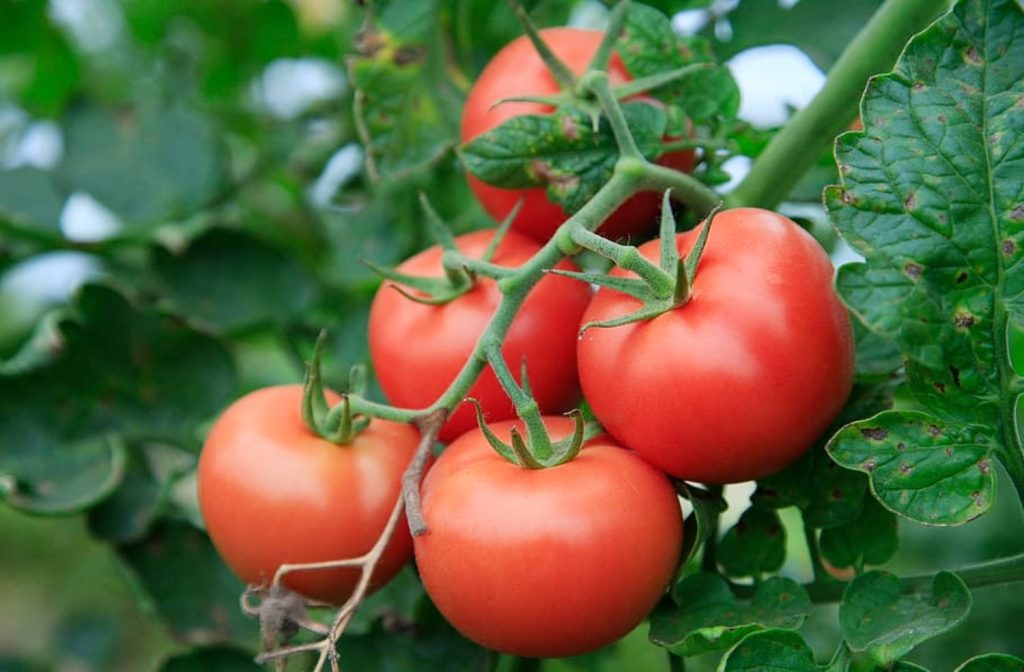
The problem: Powdery mildew
Powdery mildew is a common fungal disease that can infect a variety of plants, including ornamentals and agricultural crops.
If your tomato plants are struggling with powdery mildew, you’ll find fuzzy, powdery white or gray spots on the leaves, stems, flowers, and fruits.
Powdery mildew spreads quickly in warm, moist environments and is often spotted in late spring or early summer.
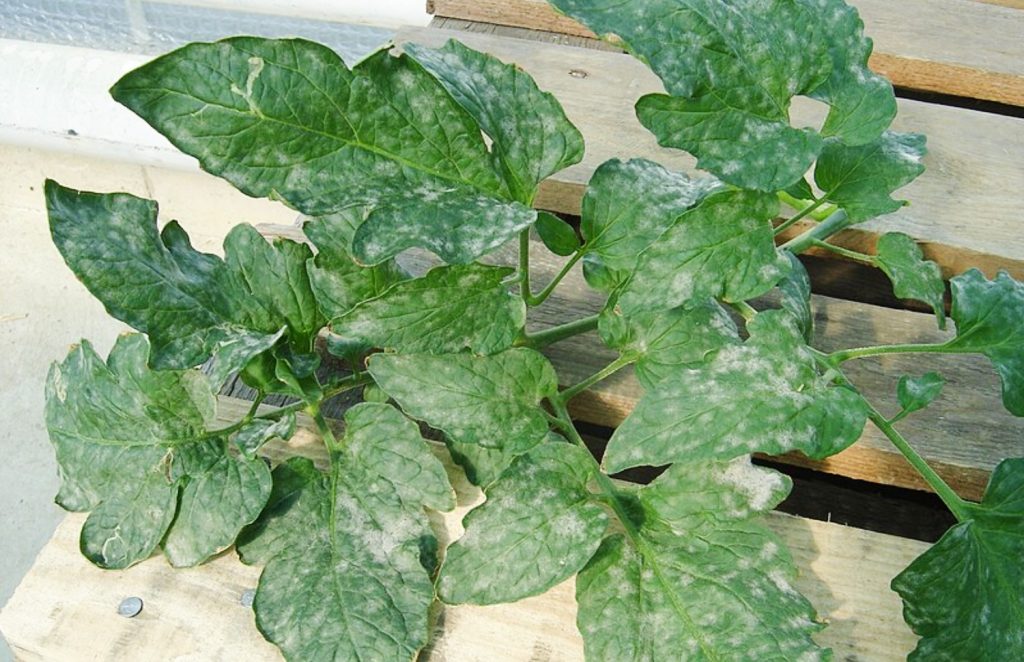
The solution: Prune infected foliage and apply a fungicide
Mix together a homemade fungicide by adding 1 tablespoon of baking soda and ½ teaspoon of Dawn dish soap to a gallon of water.
Use this concoction to spray every inch of the plant. Reapply the mixture two to three times a week until the infection clears.
If only a few leaves are infected, then simply pruning the leaves away can help manage the infection.
When planting your tomato plants, be sure to leave 24” of space between them to optimize air circulation and prevent powdery mildew from setting in.
The problem: Insect damage
Tomatoes are pretty pest-resistant. But they can attract certain insects, like aphids, spider mites, thrips, and stink bugs.
As these insects invade your tomato crop and feast on the foliage, they leave white, brown, and yellow spots on the leaves.
Sometimes, the white spots on tomato leaves aren’t caused by insect damage, but rather, by insect eggs.
Take a flashlight and magnifying glass and examine your tomato plant’s foliage more carefully.
Tomato pests like to hide on the undersides of the plant’s leaves, and in between the leaf petioles and main stem.
If bugs are what’s causing the white spots on your tomato’s leaves, you’ll need to act quickly to help your plants recover as soon as possible.
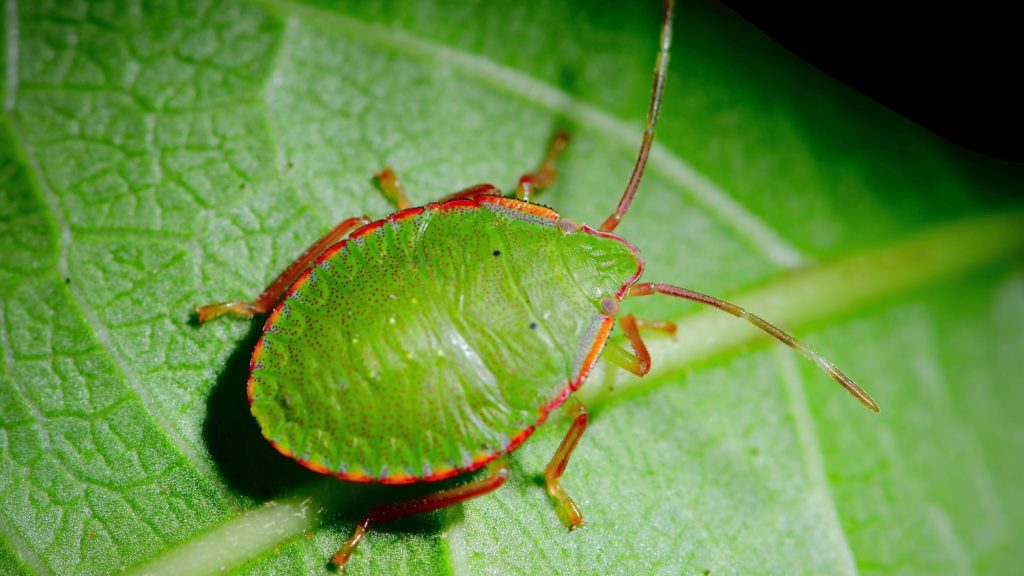
The solution: Homemade insecticide
If you’ve found red bugs, white bugs, or signs of an insect infestation on your tomato plants, grab a hose and spray those suckers off of there.
Use your fingers to gently rub your tomato plant’s foliage. This helps loosen tiny insect eggs so they don’t get a chance to feed on your crops once they hatch.
After you’ve washed your tomato plant’s foliage, allow it to air dry, and while it’s drying, mix up a homemade insecticide.
Strong-smelling ingredients, like tea tree oil, garlic, and onion will help keep those annoying bugs away.
Apply your homemade insecticide liberally and as often as necessary. Be sure to reapply after rain.
For severe insect infestations, skip the insecticide altogether and apply diatomaceous earth. This all-natural bug-killer dehydrates bugs from the inside out in a matter of hours.
You may need to apply diatomaceous earth for several days in a row. But you’ll soon have the pest problem under control.
Whichever insecticide you use, be sure to wear long sleeves, pants, gloves, goggles, and a mask when applying it. These substances can be irritating to the skin, sinuses, and eyes.
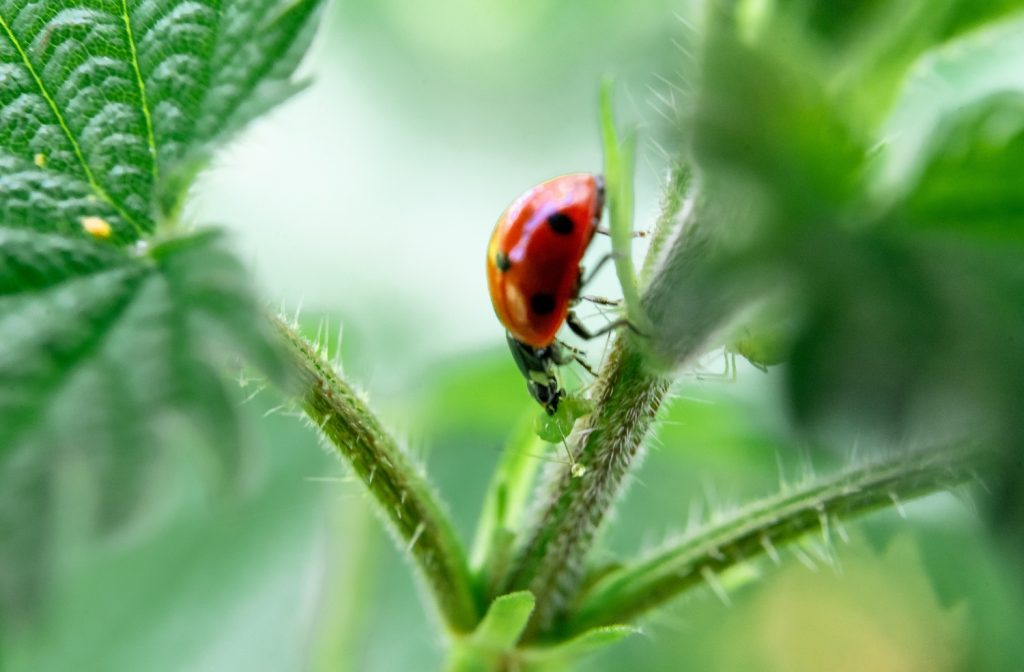
The problem: Nutritional deficiencies
Like all plants, tomatoes rely on nitrogen, phosphorus, and potassium to perform well.
But tomatoes are heavy feeders, requiring higher doses of these essential macronutrients than many other plants.
Tomatoes rely on nitrogen and phosphorus, in particular.
Nitrogen supports healthy tomatoes, enabling plants to produce plenty of green foliage and loads of crisp, juicy fruits.
Phosphorus is also essential for tomatoes, as it supports healthy flowering and fruiting. Without adequate levels of phosphorus, tomato fruits may develop blossom-end rot, which can destroy your tomato crop, even if the plants themselves manage to survive the deficiency.
It’s not uncommon for tomato plants that are struggling with nutritional deficiencies to develop white spots on their leaves.
The solution: Replace missing nutrients
If you’re seeing white spots on tomato leaves, but no signs of powdery mildew, sunscald, or a pest problem, then test the soil to check vitamin and mineral levels.
If your tomatoes are nitrogen-deficient, add nitrogen-rich materials, like hoof and horn meal, to improve their performance.
As for low phosphorus, you’ll need to add fish emulsion or another high-phosphorus fertilizer to improve soil levels.
It’s worth noting that tomato plants are also susceptible to calcium and magnesium deficiency.
Kelp meal is an excellent source of trace minerals that tomato plants love, including, not just calcium and magnesium, but also iodine, manganese, and molybdenum.
Mixing several organic fertilizers into the soil prior to transplanting your tomato seedlings and periodically throughout the growing season will provide your tomato crop with all of the nutrients it needs to perform its best.
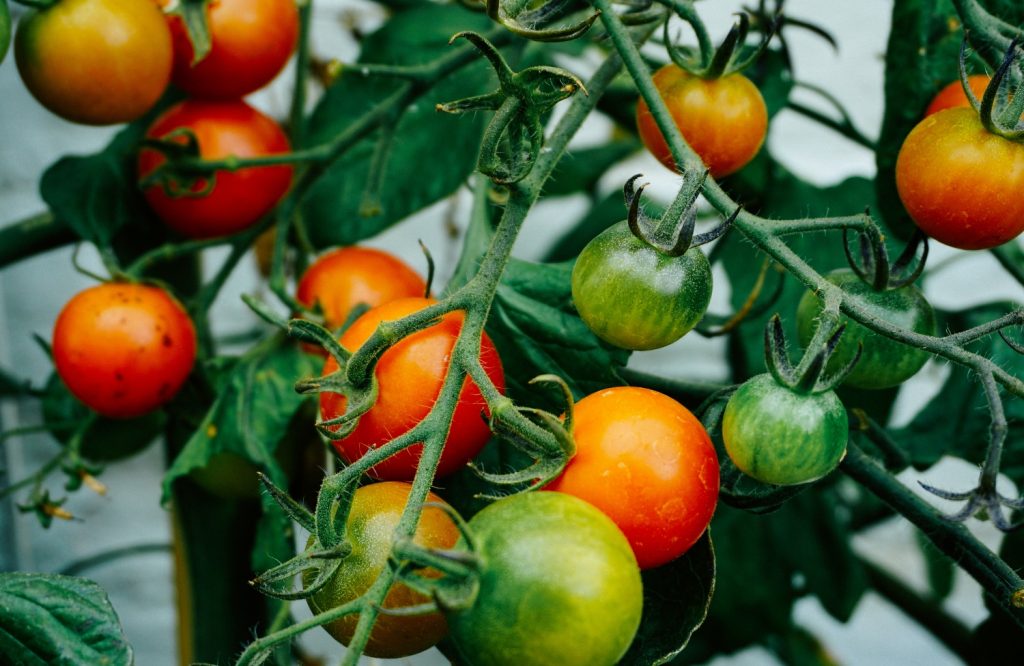
The problem: Disease
Unfortunately, those white spots on your tomato plant’s foliage could also point to a more serious problem.
Late Blight, or Phytophthora infestans, which is the same pathogen that led to the Irish potato famine, is an incurable disease that leads to water-soaked lesions on tomato leaves, which may turn white and brown.
Septoria Leaf Spot is another fatal disease that can lead to white, tan, or gray spots on tomato leaves.
The plant’s lower leaves are usually the first to be affected by Septoria Leaf Spot. As the disease progresses, the lesions spread to the top of the plant, causing the tomato leaves to turn brown and die off.
The solution: Destroy the plants
If your tomato plants are infected with Late Blight or Septoria Leaf Spot, you’ll need to remove and destroy the plants ASAP.
Uproot infected plants and burn them, or seal them in a plastic bag and throw them in the garbage.
Because these pathogens can survive in the soil for years, you’ll need to avoid growing tomatoes, or any other nightshade, in that space to prevent the infection from spreading.
To find out if your region is experiencing a blight outbreak, check out this website.
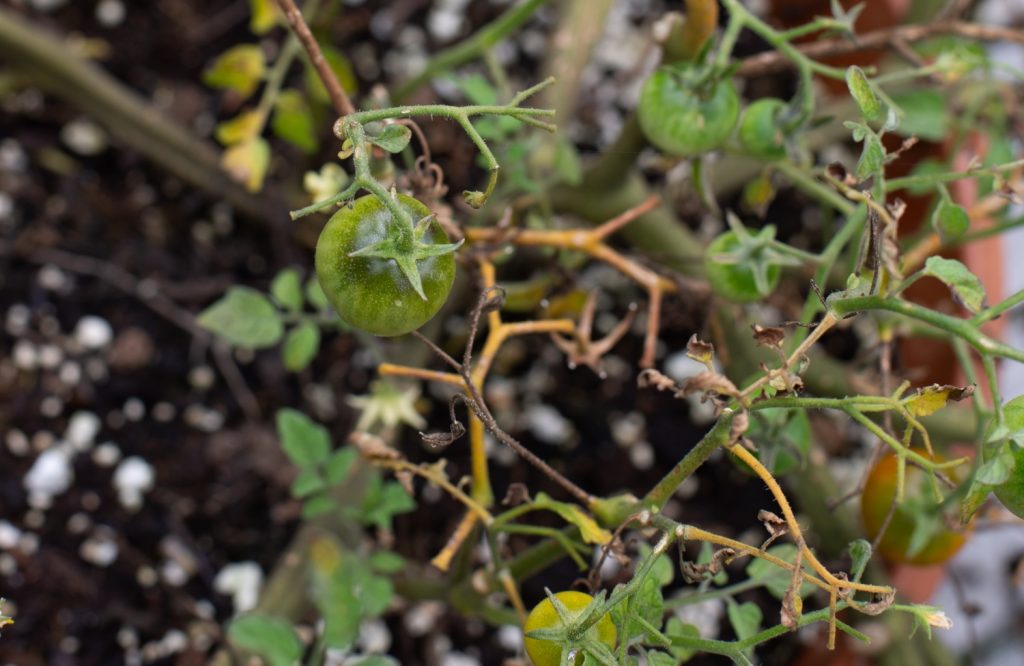
Tips for growing healthy tomato plants
Growing healthy tomato plants is easy. All you have to do is meet the plant’s growing requirements.
Plant your tomato seedlings in sandy to loamy soil that has been amended with organic materials like compost, as well as horticultural sand to improve drainage.
Ensure the soil’s pH is between 6.0 to 6.5, adding acidic materials, like sphagnum moss, as necessary to adjust the value as needed.
Plant your tomatoes in full sun. If you live in a particularly warm climate that regularly reaches 95 degrees or more during the growing season, ensure your tomato crop gets some dappled afternoon shade.
Water your tomato plants an inch or so per week. Spread a layer of organic mulch to help the soil retain moisture as the temperatures heat up.
By meeting all of your tomato crop’s growing requirements, and addressing the causes of white spots on tomato leaves promptly, you can grow a delicious crop of tomatoes right in your own backyard.
